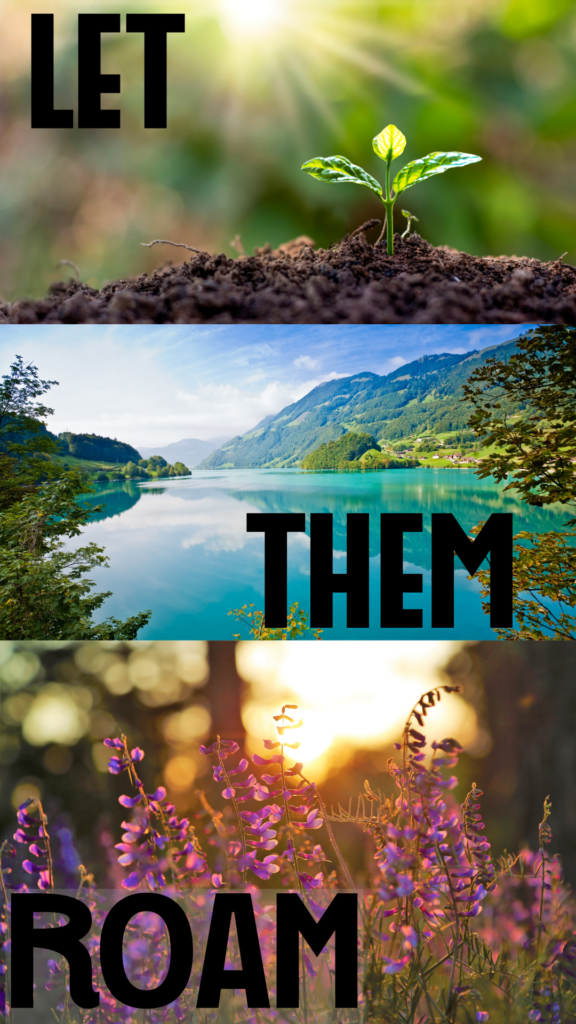In a world where headlines scream about rising youth anxiety, TikTok challenges go viral overnight, and attention spans are shorter than ever, one quiet solution is waiting right outside your door: unstructured outdoor play.
This isn’t just nostalgia talking—it’s neuroscience, mental health, and modern parenting all rolled into one.

🌿 The Nature Deficit Is Real—and It’s Hurting Our Kids
Today’s children spend less time outdoors than any generation in history, often less than 30 minutes a day, according to global studies. That’s less than the average prison inmate. Meanwhile, screen time has soared past 6+ hours daily for many children—even in preschool.
The result? Pediatricians are reporting skyrocketing rates of anxiety, obesity, sleep disturbances, and attention difficulties—conditions rarely seen in past generations on such a scale.
But here’s the hopeful truth: there’s a cure, and it’s free!!
🧠 Nature Is Brain Medicine
Outdoor play stimulates the parts of the brain that regulate focus, emotion, motor skills, and creativity. Even 20 minutes in nature has been shown to lower cortisol levels, reduce ADHD symptoms, and improve mood. For kids? It’s not just recess—it’s recovery.
And it’s not just about forests or fancy parks. It’s your backyard, a dirt trail, a patch of grass, a community basketball court. It’s freedom. Autonomy. Risk. Resilience.
📱 Screens Aren’t Evil—But They Need Boundaries
We’re not anti-tech. Tech is here to stay, and it can teach, connect, and even inspire. But let’s be honest: most screens aren’t teaching kids calculus—they’re feeding them dopamine-driven algorithms designed to keep them scrolling, not exploring.
The WHO and American Academy of Pediatrics now urgently recommend limiting screen time—especially for children under 10—because of its correlation with language delays, sleep issues, and emotional dysregulation.
What’s the antidote? Let them roam.
💡 Why Now? Why You?

Today’s parents are stretched thin—juggling work, inflation, global uncertainty, and a constant barrage of “must-dos.” But one powerful way to invest in your child’s future isn’t on Amazon or a summer camp waitlist.
It’s reclaiming the outdoors as a daily part of life.
🌍 Around the World, the Shift Has Begun
- In Europe, cities are removing “No ball games” signs and redesigning public spaces to prioritize child play.
- In the U.S., “Green Hours” and “forest schools” are gaining traction, with outdoor classrooms becoming the new trend in early education.
- In parenting circles, there’s a growing movement to bring back the 90s-style childhood—complete with neighborhood games, tree climbing, and mud pies.
It’s not about being perfect. It’s about being intentional.
🛠 How to Start—Today
- Designate one hour a day for outdoor play—no agenda, no screens.
- Create “Yes spaces” in your yard, porch, or living room that spark curiosity and movement.
- Join local efforts to build or preserve safe, natural spaces.
- Model it—show your kids how you enjoy a walk, a bike ride, or watching clouds.
- Replace screen time with green time, gradually and lovingly.


❤️ What’s at Stake
Outdoor play isn’t a luxury—it’s a lifeline. It’s how your child learns to solve problems, build confidence, regulate emotions, and connect to the world beyond the algorithm.
By saying “yes” to fresh air and scraped knees, we’re not just raising kids.
We’re raising resilient humans who know how to wonder, wander, and thrive.
So next time your child’s bored? Don’t hand them the tablet.
Hand them the world.
Let them roam.
